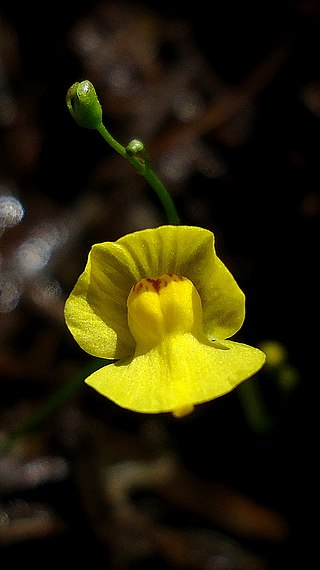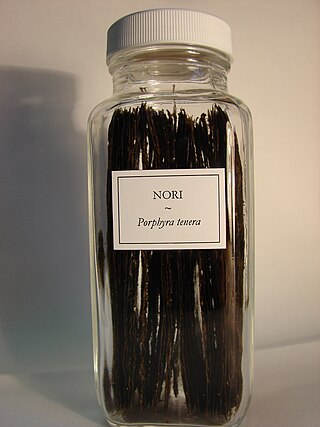
Pythium is a genus of parasitic oomycetes. They were formerly classified as fungi. Most species are plant parasites, but Pythium insidiosum is an important pathogen of animals, causing pythiosis. The feet of the fungus gnat are frequently a vector for their transmission.

Metalaxyl is an acylalanine fungicide with systemic function. Its chemical name is methyl N-(methoxyacetyl)-N-(2,6-xylyl)-DL-alaninate. It can be used to control Pythium in a number of vegetable crops, and Phytophthora in peas. Metalaxyl-M is the ISO common name and Ridomil Gold is the trade name for the optically pure (-) / D / R active stereoisomer, which is also known as mefenoxam.

Pythiosis is a rare and deadly tropical disease caused by the oomycete Pythium insidiosum. Long regarded as being caused by a fungus, the causative agent was not discovered until 1987. It occurs most commonly in horses, dogs, and humans, with isolated cases in other large mammals. The disease is contracted after exposure to stagnant fresh water such as swamps, ponds, lakes, and rice paddies. P. insidiosum is different from other members of the genus in that human and horse hair, skin, and decaying animal and plant tissue are chemoattractants for its zoospores. Additionally, it is the only member in the genus known to infect mammals, while other members are pathogenic to plants and are responsible for some well-known plant diseases.

Pythiaceae is a family of oomycetes. The family includes serious plant and animal pathogens in the genus Pythium. The family was circumscribed by German mycologist Joseph Schröter in 1893.

Pythium debaryanum is a species of water mould in the family Pythiaceae. It is known as a plant pathogen on many kinds of wild and cultivated plants, including peanut, beet, eucalyptus, tobacco, and pine trees. The plants develop damping off, a disease state.
Pythium irregulare is a soil borne oomycete plant pathogen. Oomycetes, also known as "water molds", are fungal-like protists. They are fungal-like because of their similar life cycles, but differ in that the resting stage is diploid, they have coenocytic hyphae, a larger genome, cellulose in their cell walls instead of chitin, and contain zoospores and oospores.

Pythium splendens is a plant pathogen. It is a potentially useful organism for the synthesis of large amounts of eicosapentaenoic acid, which is a polyunsaturated fatty acid with a variety of functions that are beneficial to biological systems.
Pythium ultimum is a plant pathogen. It causes damping off and root rot diseases of hundreds of diverse plant hosts including corn, soybean, potato, wheat, fir, and many ornamental species. P. ultimum belongs to the peronosporalean lineage of oomycetes, along with other important plant pathogens such as Phytophthora spp. and many genera of downy mildews. P. ultimum is a frequent inhabitant of fields, freshwater ponds, and decomposing vegetation in most areas of the world. Contributing to the widespread distribution and persistence of P. ultimum is its ability to grow saprotrophically in soil and plant residue. This trait is also exhibited by most Pythium spp. but not by the related Phytophthora spp., which can only colonize living plant hosts.
Pythium dissotocum is a plant pathogen infecting strawberry and rice.
Pythium spinosum is a plant pathogen infecting a wide variety of crops. Hosts observed to be infected include rice in Taiwan, Primula, Impatiens, soil in Florida, Cucumis melo in South Korea, and soybeans in Arkansas USA, China, and Indiana USA.

Utricularia gibba, commonly known as the humped bladderwort or floating bladderwort, is a small, mat-forming species of carnivorous aquatic bladderwort. It is found on all continents except Antarctica.

Pythium insidiosum is a species of Pythium and a member of the class oomycota. Pythium insidiosum is mainly found in standing water and occasionally soil. Unlike most Pythium species, which are generally pathogens of terrestrial plants, Pythium insidiosum is a pathogen of mammals. It causes pythiosis, mainly in horses, dogs, and humans. It can also cause disease in cats. It is a non-transmissible disease and occurs mainly in tropical climate, endemic to Thailand, affecting mainly humans and horses and in Brazil, affecting mainly horses. Infection can occur in healthy mammals. The pathogen is well-adapted to mammalian body temperature, with an optimum temperature for growth of 34–36 °C (93–97 °F).

Houttuynia is a genus of two species in the Saururaceae native to Southeast Asia. One species, H. cordata, is widely cultivated as a culinary herb. The genus was originally described in 1783 by Carl Peter Thunberg when he formally described H. cordata as the only species. It remained a monotypic genus until 2001 when Zheng Yin Zhu and Shi Liang Zhang discovered and described a second species native to China, H. emeiensis but the validity still unestablished. It was named after Martinus Houttuyn.

Pyropia tenera, also known as gim or nori, is a red algal species in the genus Pyropia. The specific name, tenera, means "delicate" and alludes to its small size. It typically grows to lengths between 20 and 50 cm. It is most typically found in the western Pacific Ocean and the Indian Ocean.
Pyropia virididentata, formerly known as Porphyra virididentata, is a red alga species in the genus Pyropia. It is endemic to New Zealand. It is monostromatic, monoecious, and grows in the intertidal zone, predominantly on rock substrata. With Porphyra cinnamomea, Pyropia rakiura and Clymene coleana, they can be distinguished by morphology, as well as geographical, ecological and seasonal distribution patterns, and importantly, chromosome numbers, which in this species n = 3. Finally, these four species are distinguished by a particular nucleotide sequence at the 18S rDNA locus.
Pythium oopapillum is a plant pathogen, first isolated in Canada.
Pythium camurandrum is a plant pathogen, first isolated in Canada.

Stylonema alsidii is a species of marine red algae. The type locality is Trieste in Italy, but it has a worldwide distribution.
Pythium porphyrae, is a parasitic species of oomycete in the family Pythiaceae. It is the cause of red rot disease or red wasting disease, also called akagusare (赤ぐされ) in Japanese. The specific epithet porphyrae (πορφυρα) stems from the genus of one of its common hosts, Porphyra, and the purple-red color of the lesions on the thallus of the host. However, many of its hosts have been moved from the genus Porphyra to Pyropia.
Black rot on orchids is caused by Pythium and Phytophthora species. Black rot targets a variety of orchids but Cattleya orchids are especially susceptible. Pythium ultimum and Phytophthora cactorum are known to cause black rot in orchids.









